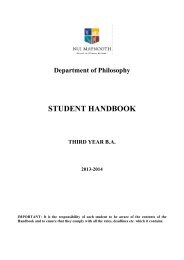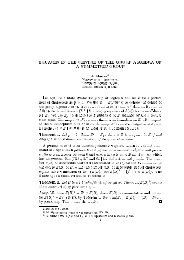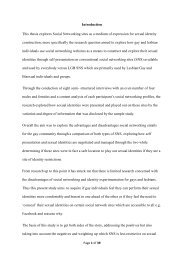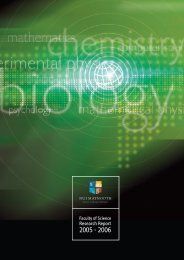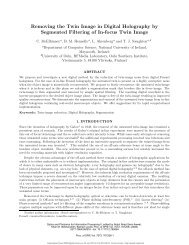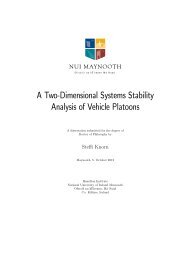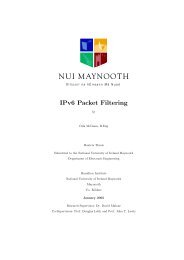CIICT 2009 Proceedings
CIICT 2009 Proceedings
CIICT 2009 Proceedings
- No tags were found...
Create successful ePaper yourself
Turn your PDF publications into a flip-book with our unique Google optimized e-Paper software.
Digital Audio Watermarking by Magnitude Modification ofFrequency Components Using the CSPE AlgorithmJian Wang #1 , Ron Healy #2 , Joseph Timoney #3# Computer Science Department,National University of Ireland, Maynooth, Co. Kildare, Ireland1jwang@cs.nuim.ie2ronhealyx@gmail.com3jtimoney@cs.nuim.ieABSTRACT:In this paper we describe a process whereby themagnitude of either one or two frequency components ofa signal is modified in order that it may be used toencode a hidden message within a signal in such a way asthe casual observer would have no way of noticing thepresence of a hidden message. Previous work has usedfiltering and signal addition to achieve the same goals.The current work improves on this by using a recentsuper-resolution component-identification technique toisolate the components to modify, limiting the impact onthe quality of the signal.Keywords: Signal processing, digital audio watermarking,data hiding, Steganography1.0 INTRODUCTIONThe concept of Steganography, defined as “the art orpractice of concealing a message, image, or file withinanother message, image, or file” [1] is not new.Steganography may be combined with Cryptography inorder to make message data more secure even if thepresence of the message is discovered. Digital watermarkingof audio and video is a form of Steganography, in that theaudio/video can be used to ‘hide’ the presence of otherinformation.In recent years there has been a marked increase in researchin the area of digital watermarking. This has been driven, inpart, by the needs of the Entertainment Industry to findmeans for protecting, tracking or identifying intellectualproperty such as photographs, music and movies. The SDMI(The Secure Digital Music Initiative, a group consisting ofmore than 200 companies in the fields of I.T., Music andEntertainment, Consumer Electronics, Security and InternetService Providers) challenge at the turn of the century, withregard to digital music, contributed to much investigationinto the area of digital watermarking over the interveningyears. Eventually, the SDMI folded, claiming that it wasawaiting developments in technology before implementingdigital rights management technologies. One of the reasonsidentified for the SDMI’s failure was that the technologiesthen available were insufficient to achieve the aim ofcompletely hiding an added watermark from those expert ortalented listeners described as ‘golden ears’. This meant thatthere was no way of preventing detection and ultimateremoval of the watermark. The watermarking technologythat the SDMI purported to recommend to the Industry wasbroken almost immediately [2].There have been a number of alternative propositions forhiding data in cover signals and most are successful to acertain extent or in a given context. A good overview of thetheories in this area can be found in [3]. The basic premiseof watermarking schemes is that the information to bewatermarked w is added or embedded in the cover or hostsignal s to produce a watermarked signal s’s + w = s’ (1)This paper proposes a technique for hiding data in coveraudio signals, specifically music or spoken word, by theidentification and modification of the magnitude offrequency components in the cover signal itself.In part, the work is inspired by [4], a technique designed forcovert communications across a radio channel for militaryapplications, and follows on from an earlier work whichused the addition of multiple frequency components toachieve a similar aim [5]. In [5] it was proposed that themessage to be embedded was to be separately generated.This was then added to the host or cover audio. In thispaper, however, we instead propose that the host or cover is34




